Foresters use a clinometer to calculate the tree height. These can be quite expensive to buy so you’re not likely to invest in one unless you need to measure trees frequently. However, don’t despair as it is quite possible to achieve good results with a smartphone; with the advantage that you nearly always have one with you. This is a method I’ve developed that I hope others will find useful.
Preparations
Install a spirit level app
iPhone and Google Android phones (sorry, I have no working knowledge of Blackberrys) allow apps to be downloaded. There are a number of apps available that use the smartphone’s accelerometer to provide a virtual spirit level. Some of these include a tilt meter or level meter and it’s this kind that you will need to be able to measure an angle of elevation.
For the example below I use an iPhone and the Carpenter app from iHandy. The full version costs under $2 and I’ve found that it works very well.
Calibrate – the level … and yourself
- Zero your virtual spirit level
If you’ve installed a good spirit level app it should allow you to calibrate your smartphone to reasonable accuracy. On a shelf that you’ve checked to be perfectly level with a real spirit level, place your smartphone on its side , then ‘zero’ it (calibrate it to read ‘0’). - Calibrate your pacing
You will need to be able measure the distance that you are standing away from a tree. You can of course carry a long tape measure with you when you think you’ll need one but I find it very helpful to know my pacing with reasonable accuracy. For example I know that 21 of my strides equal 20m. - Measure the height above ground of your eye
Simply measure the distance from the ground under your feet to one of your eyes.
The data and the maths
The data required
You will need to know three things:
- The angle of elevation to the top of the tree from the horizontal
As shown below the horizontal will be equivalent to a line between your eye and someone of the same height standing next to the tree. - The distance from where you stand to the base of the tree
- The height of your eye above the ground

The maths
Don’t be put off if you’re not confident about the maths as, although it may seem daunting, it’s actually quite simple. You will use trigonometry but your smartphone’s calculator will do all the hard calculations for you.
The equation you will use is:
Tan angle of elevation x distance to tree
then
+ height of eye above ground
Step by step guide (with working example)
1. Stand away from the tree
Stand away from the tree so that you can see its top. The method works best if your angle of elevation is about 45o . In other words that your distance from the tree is equivalent roughly to the height of the tree (you’ll get better at estimating this, the more trees you measure).
2. Pace (or measure) the distance away from the tree
If you are working with someone else they can help you measure the distance from where you’re standing to the tree. If you’re on your own, drop something where you’re standing to mark the position so that you can return once you’ve paced or measured the distance to the tree.
I was 21m away from my tree. Write this distance down or memorise it.
3. Measure the angle of elevation

Standing at your spot (step 2) open the virtual spirit level app on your smartphone and select the angle measure. Bring the smartphone to your eye and sight along its edge, as if you’re looking down a gunsight, aiming at the very top of the tree. You will need to hold the phone so that your fingers are not in the way (see photo).
With the app I use there is a ‘hold’ button that freezes it when you are satisfied that you are ready to record the angle.
My angle of elevation was 43.7o. Write this angle down or memorise it.
4. Calculate tree height
Open the calculator on your smartphone. You will need to access the scientific calculator. For iPhones and HTCs you can do this by tilting your phone onto its side (landscape), where you will find the function for Tangent or Tan.
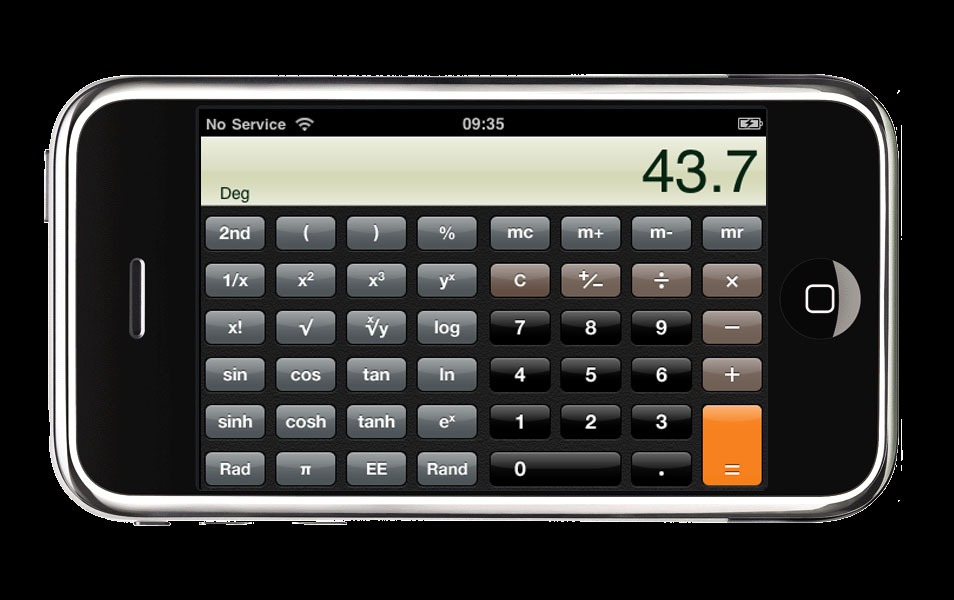
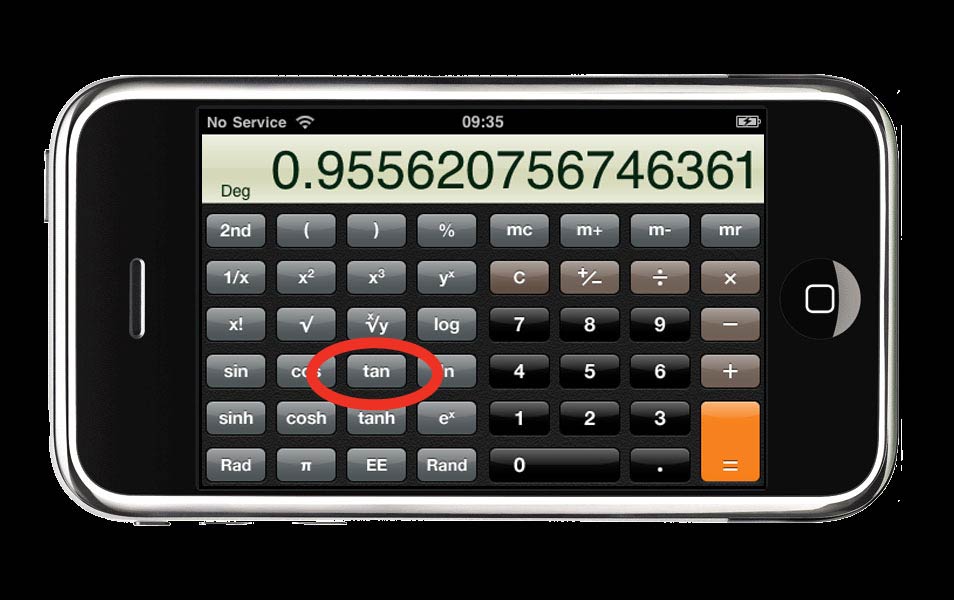
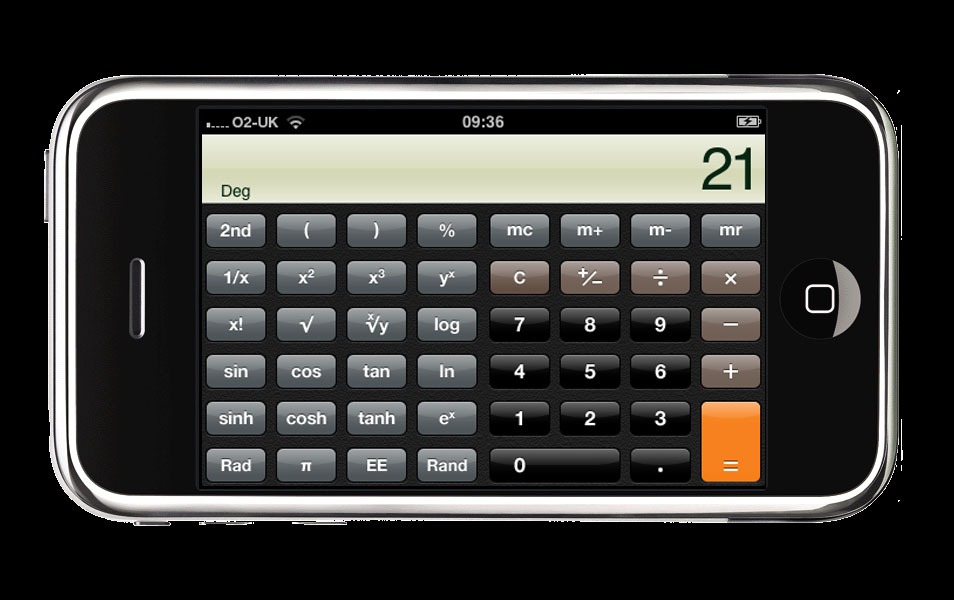
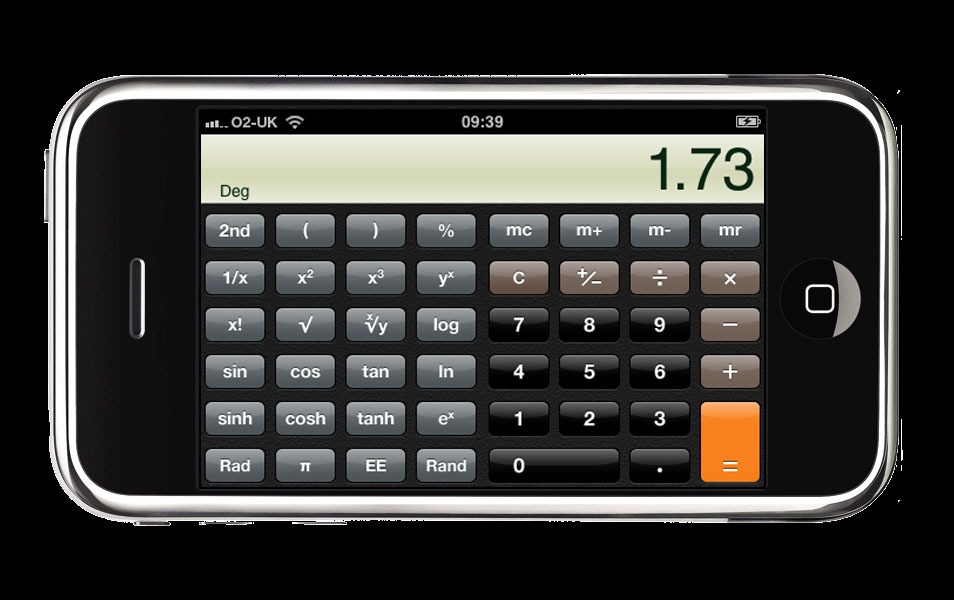
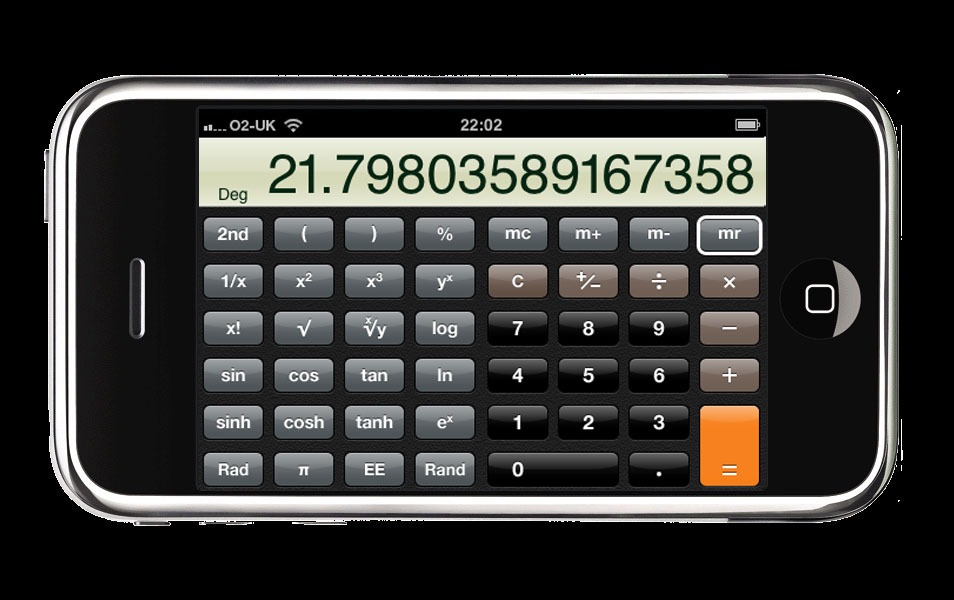
So my tree was 21.798m tall. Given that there is lots of room for error I would recommend that you round the result to the nearest whole number = 22m tall. It doesn’t matter whether you use metres or feet as long as you use consistently the same units throughout (i.e. don’t switch between m and cm, or between feet and inches).
Increasing accuracy
The method I describe above works well on level ground. However, if you want to increase accuracy especially if the ground is not level, you can improve it quite simply. Instead of using the height of your eye above ground, you substitute it with (Tan angle to the base of the tree x distance to tree). So the full equation would be:
(Tan ∠ to tree top x distance to tree) + (Tan ∠ to tree base x distance to tree)
Other applications
You can use this method to calculate the height of other features on trees, such as the height of the lowest branch, a major fork, a bird nest or bat roost, or of course for any tall object such as a bridge or building.
Gabriel Hemery
 This work is licensed under a Creative Commons Attribution- NonCommercial- NoDerivs 3.0 United States License.
This work is licensed under a Creative Commons Attribution- NonCommercial- NoDerivs 3.0 United States License.

Another app for Android: https://play.google.com/store/apps/details?id=net.paludour.android.heightestimator
In modern phones you got AR-technology that makes a digital 3D world where you could do measurements. The measurements are rather accurate.
Here is two apps that let you measure the height of trees with AR.
Iphone:
https://apps.apple.com/gb/app/arboreal-tree-height/id1444138299
Android:
https://play.google.com/store/apps/details?id=se.arboreal.height
Hi,
On a sunny day I drove a stick in the ground next to my tree in a sun light area.
I put a small level on the side of my stick to make sure it was level. I then drove my stick in the ground
to the measurement of 12 inches. I then waited until the shadow of my stick measured 12 inches, then very quickly I took my measuring wheel and measured the shadow of the tree.
Notify me if this is a possibility of accuracy ?
This is just as accurate as using the tangent function. Both methods rely on the idea that similar triangles have proportional sides. The tangent function can be used on cloudy days however:)
A super easy method for getting the rough height of a tree using pretty much nothing…
Guesstimate a 45 degree angle to the top of the tree. Basically, move toward or away from the tree until looking up to it’s too is a 45 degree angle (more accurate if that 45 degree angle is from your feet to the trees too).
Once the angle is 45 degrees, the distance from you to the base of the tree is the same as the Height of the tree. No fancy anything needed. Just pace out your distance to said tree and then measure how big your paces are.
This is by far nowhere near accurate, but im guessing within about 5%. Mine were usually within 1%.
This is the method I use when just trying to guess the height of a really tall tree, let’s say it’s a tree that looks like it’s about 60 feet tall, or is it closer to 75 feet tall? You can get a really good guesstimate this way.
Great article and thanks for the information.
Mr Bob has a great suggestion too by walking away from the tree until you reach 45 degrees and measuring the distance from where you’re standing to the tree.
To make it more accurate for me I add the height from the ground to my eyes. (tough to measure elevation on an ipad from the ground 🙂
I use the “hypotenuse” method of a right triangle frequently and it works well. All you need is a level and a speed square – and of course a measuring tape for accuracy.
I’d highly recommend Theodolite by Hunter which is an iPhone app although they may have it for android as well. It simplifies the estimations and do so eerily accurate by just looking through your phone cam and pointing at the bottom and top of the tree as if taking a photo. No calculations needed.
is it possible to calculate the height of a person using smartphone ???
Gabriel, thank you so much for the post. It is very informative and detailed. I did a similar experiment in my school and your post was used as a reference. Some feedback:
1. We used Clinometer app. We found that the large numbers was handy for the students. The down side of this app is that you may incorrectly hold the iPad (or phone)… you need to start from upright (portrait) rather than landscape. This was rather counter-intuitive, so I’d say the Spirit Level app was better in this regard.
2. Since we studied angle of elevation as well as angle of depression, use used the angle of depression along with the student’s eye-height to calculate the horizontal distance.
Thanks once again!
Download the free Android App “Tree Height Measurement”. The App is German and English.
https://market.android.com/details?id=ftools.baumhoehenmesser&feature=search_result
Thanks for alerting me to this. Has anyone else tried this app and found it easy to use and accurate?
Gabriel
Thank you for taking the time to lay this out and for an excellent job on breaking down the methodology, but you might care to double check the maths in your example. Subtracting your given height from your given total leaves 21.024m, which divided by the 21m distance from the tree leaves Tan ∠ to tree > 1 which would make the resulting angle greater than 45º. The true total should be 21.798, which can then be rounded up to 22.
Regards,
k
Kevin
Thank you so much. Firstly for spotting the error and secondly for pointing my mistake to me so helpfully. You are right in that somehow I added the incorrect value for my eye height. I’ve no idea how I managed to make such a simple error! I am indebted
I have corrected the post. Next time I write some math I may come back to you first …
Gabriel